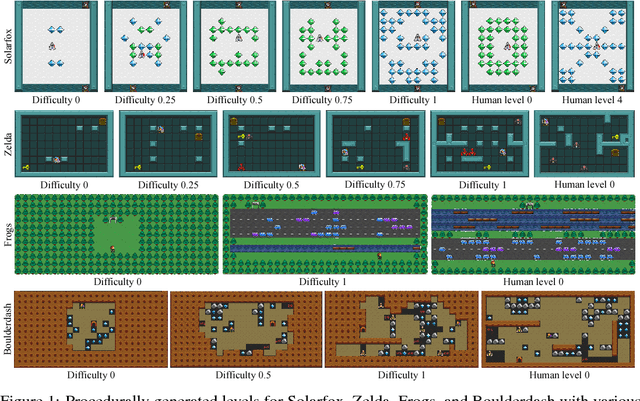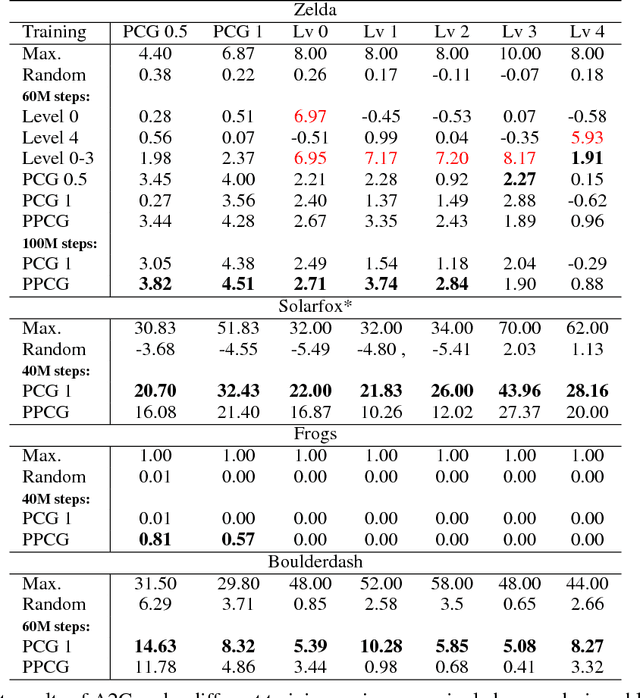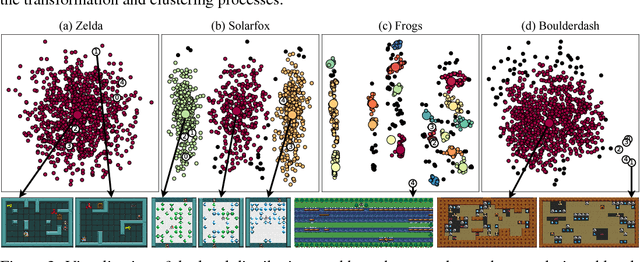Illuminating Generalization in Deep Reinforcement Learning through Procedural Level Generation
Paper and Code
Sep 07, 2018



Deep reinforcement learning (RL) has shown impressive results in a variety of domains, learning directly from high-dimensional sensory streams. However, when neural networks are trained in a fixed environment, such as a single level in a video game, they will usually overfit and fail to generalize to new levels. When RL models overfit, even slight modifications to the environment can result in poor agent performance. In this paper, we explore how procedurally generated levels during training increase generality. We show that for some games procedural level generation enables generalization to new levels within the same distribution. Additionally, it is possible to achieve better performance with less data by manipulating the difficulty of the levels in response to the performance of the agent. The generality of the learned behaviors is also evaluated on a set of human-designed levels. Our results show that the ability to generalize to human-designed levels highly depends on the design of the level generators. We apply dimensionality reduction and clustering techniques to visualize the generators' distributions of levels and analyze to what degree they can produce levels similar to those designed by a human.
 Add to Chrome
Add to Chrome Add to Firefox
Add to Firefox Add to Edge
Add to Edge